Archaeology & History
Ancient DNA Testing Has Revealed the Owner of a 20,000-Year-Old Deer Tooth Pendant, German Researchers Say
The novel technique is like a “washing machine for ancient artefacts.”
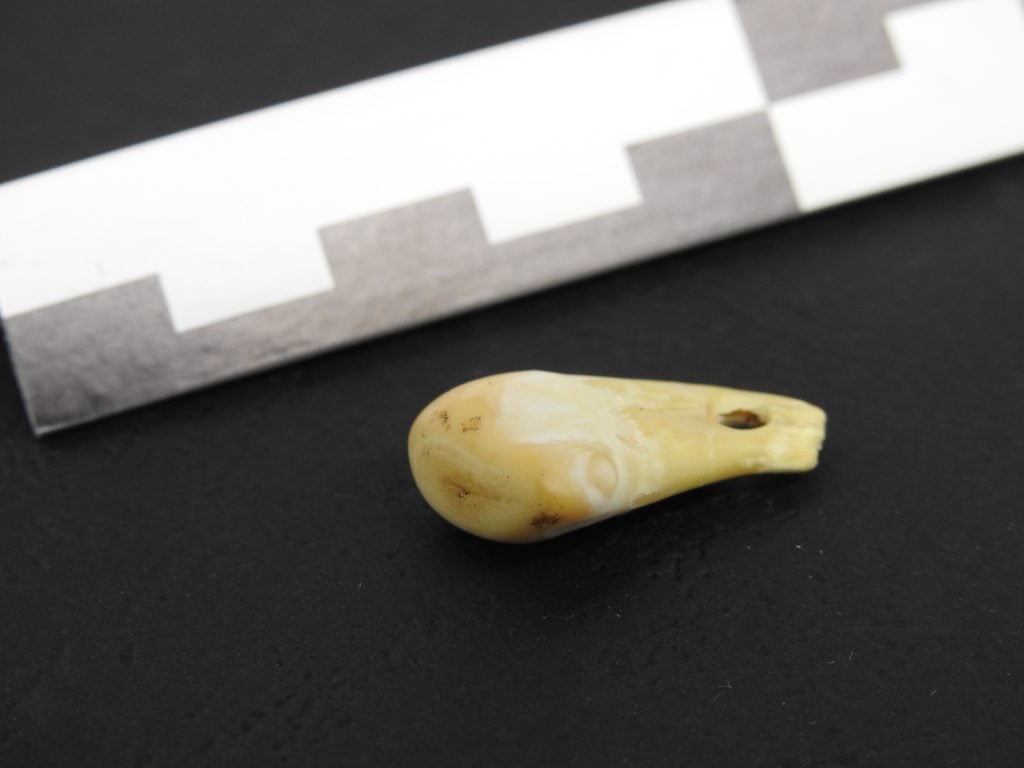
The novel technique is like a “washing machine for ancient artefacts.”

Richard Whiddington

A new, nondestructive method of extracting DNA has been used for the first time to identify the owner of a Palaeolithic pendant found in a south Siberian cave.
Researchers in a laboratory in Leipzig, Germany were able to discover that the pendant, which bears a small drill hole for a long-lost thread, belonged to a woman genetically related to contemporaneous hunter-gatherers from further east in Siberia. The object is made out of a wapiti, or elk, canine, and dated to between 19,000 and 25,000 years ago.
The success followed years of frustrated efforts which forced the international team to create a novel way of isolating DNA from ancient bones and teeth without damaging them.
Even after thousands of years, porous materials, such as bones and teeth, retain human skin cells, sweat, or other body fluids after contact. The laboratory’s key was to isolate this material and it focused on a recently excavated object that had been handled using gloves and face masks, therefore avoiding human contamination.
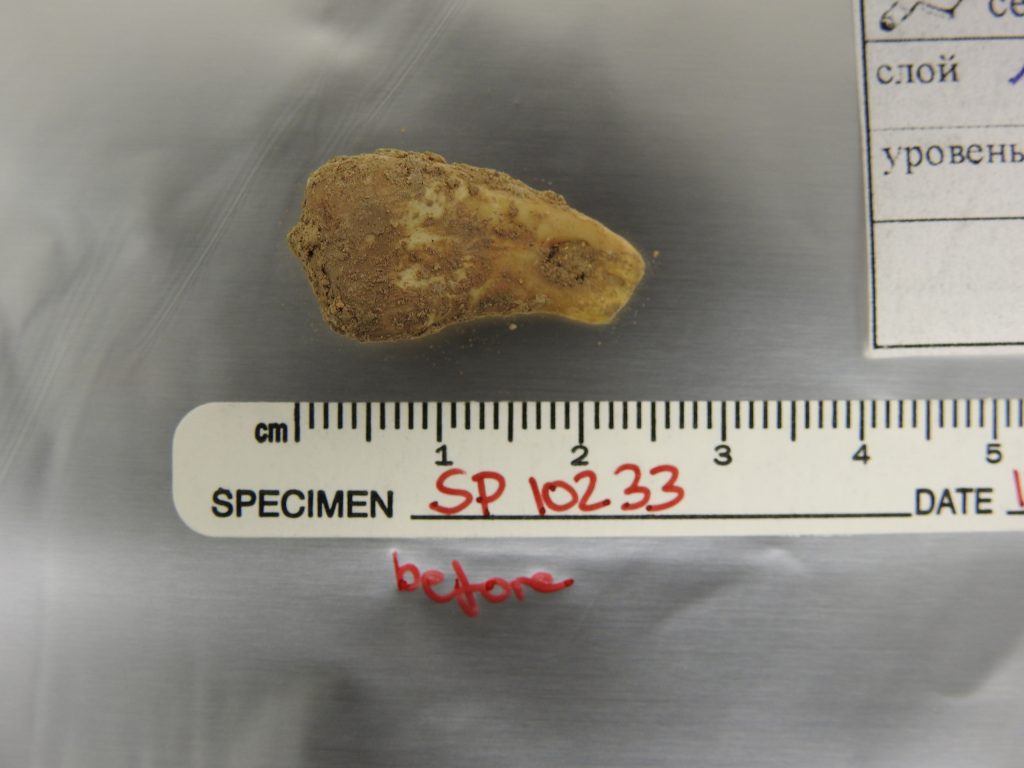
The Pierced deer tooth discovered from Denisova Cave before DNA extraction. Photo: Max Planck Institute for Evolutionary Anthropology
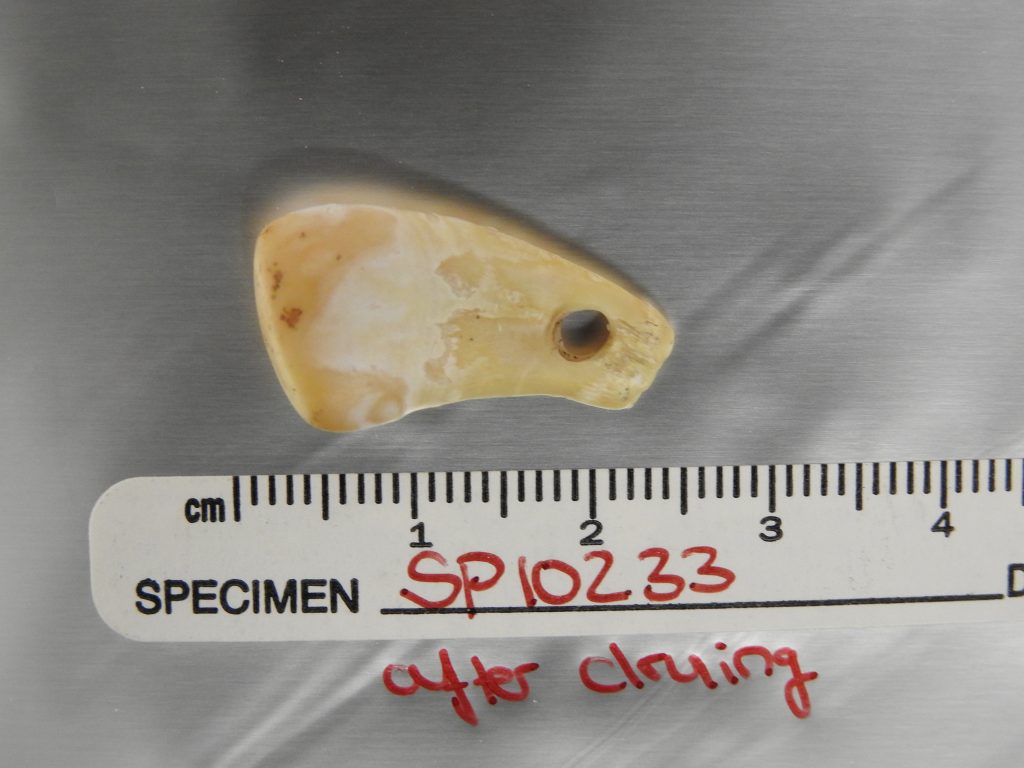
The Pierced deer tooth discovered from Denisova Cave after DNA extraction. Photo: Max Planck Institute for Evolutionary Anthropology
The technique it developed involves immersing an artifact in liquid at temperatures up to 194° F, which washes off DNA, allowing it to be examined separately. Elena Essel, the study’s lead author, described the mechanism as being similar to a “washing machine for ancient artifacts.”
Leipzig’s Max Planck Institute for Evolutionary Anthropology has heralded the work as launching a new era in ancient DNA research, given it will allow researchers to identify users of ornaments and tools from tens of thousands of years ago.
“The amount of human DNA we recovered from the pendant was extraordinary,” Elena Essel said in a statement, “almost as if we had sampled a human tooth.”
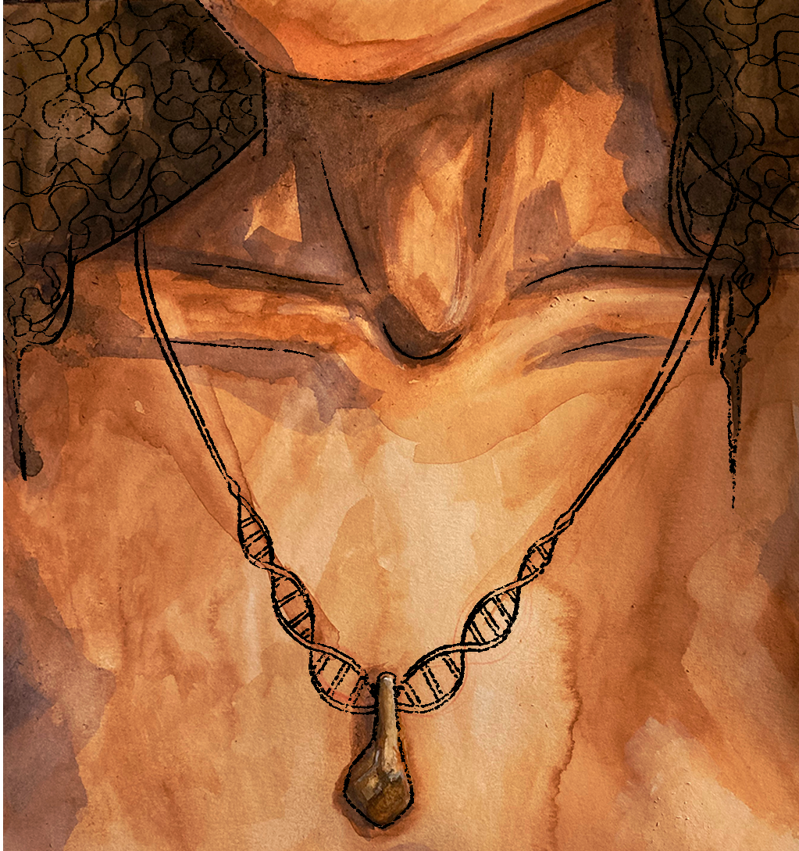
Artistic interpretation of the pendant with dark DNA cordage. Photo: Myrthe Lucas.
The Palaeolithic pendant was found by Russian researchers in 2019 in Denisova Cave, which continues to prove something of a goldmine for archeologists given numerous species lived in the cave across time. Remains and tools relating to Denisovans, Neanderthals, and Homo sapiens have previously been found in the cave.
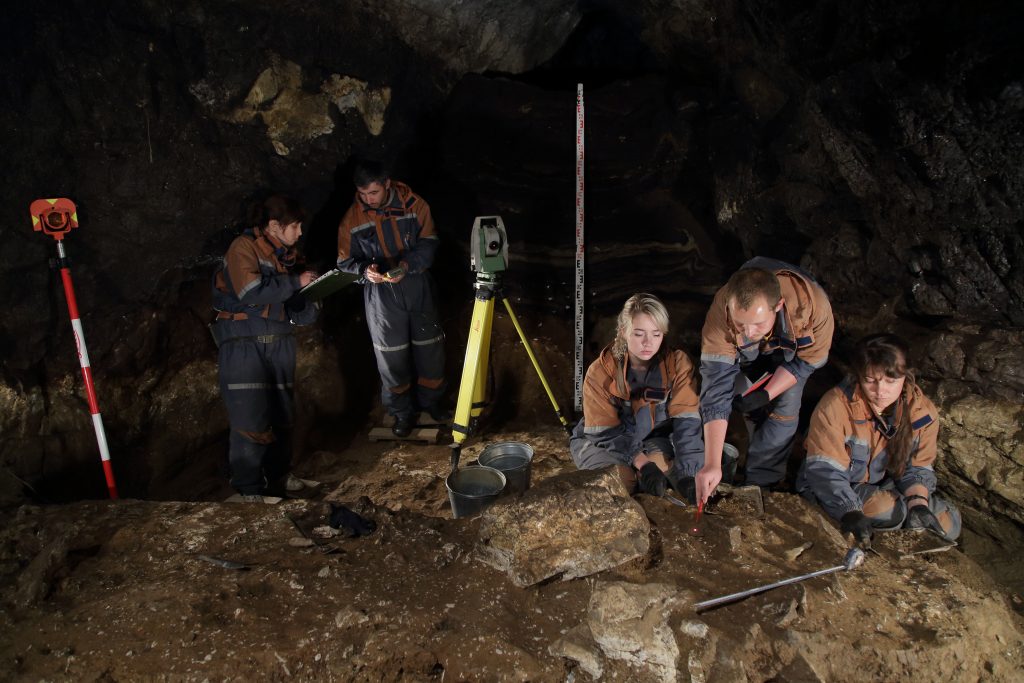
Excavations in the South Chamber of Denisova Cave in 2019. Photo: Sergey Zelensky.
The researchers now plan to load up their washing machine with bone and teeth objects from the Stone Age to the trace genetic ancestry and sex of the original owners.
“Forensic scientists will not be surprised that human DNA can be isolated from an object that has been handled a lot,” said Matthias Meyer, a Max Planck geneticist. “But it is amazing that this is still possible after 20,000 years.”